When students move away from home to college for the first time, it can be a time of increased tension and worry. Homesickness, academic anxiety and an increase in responsibilities can all lead to college students feeling overwhelmed and stressed out. If you’re a college student that faces these challenges, one way to combat some of that tension and stress is to keep plants in your dorm room.
Having plants in your living space can help increase productivity, lift your mood and even help you get a better night’s sleep. That’s because house plants take in excess carbon dioxide in the air and produce life-giving oxygen. Keeping potted house plants in your dorm will freshen your air while adding a splash of natural color to your living space.
With that in mind, here is a list of five of the most dorm-friendly, low-maintenance decorative plants that you can buy.
1. Aloe Vera
Aloe vera is on top of this list because it is one of the most useful, low-maintenance and multipurpose house plant you can buy. In fact, aloe vera has been shown to help heal or diminish the symptoms of a variety of skin-related ailments, from sunburns and scratches to mosquito bites and dry skin.
If you break off a tendril from your aloe vera plant and squeeze it, a thick, viscous and clear gel will come out of the severed end of the tendril. If you rub this natural gel onto any small, shallow scrapes and cuts, burns (sunburns or surface-level heat burns) and/or insect bites, the plant’s natural healing potential will help burns fade, scratches heal and insect bites stop itching.
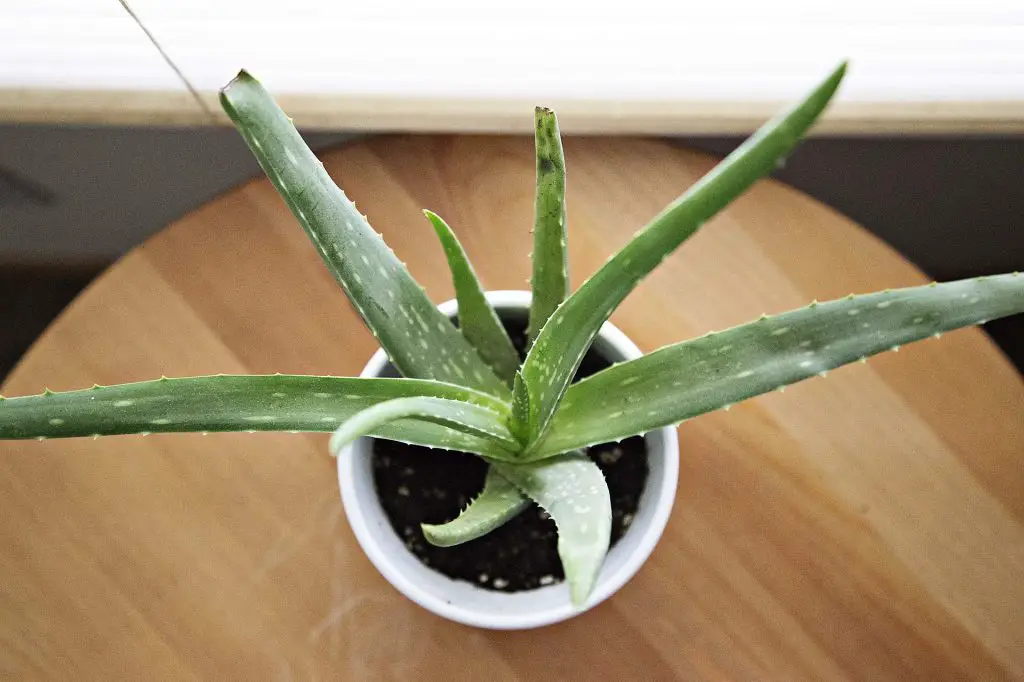
Apart from being useful for treating minor skin problems and burns, aloe vera is the perfect plant for college students living in a dorm because it is very easy to take care of. It works as a potted indoor plant, and, because it lives primarily in tropical and dry desert conditions in nature, it doesn’t need a whole lot of maintenance. You should deeply water your aloe plant and then wait until the top inch or more of soil in the pot is dry again before giving it any more water. Also, it’s recommended that you water it less in the winter. Other than watering, there’s nothing you need to do to keep your aloe vera plant happy and healthy. Just keep it away from any of feline friends — they are one of the plants poisonous for cats.
2. Succulents
Aloe vera is a succulent, but because of its special properties and uses, it gets its own spot on the list. Other succulents, such as the California sunset, the ghost plant and the barrel cactus don’t have as many of the potential health benefits of aloe vera, although they still do a fantastic job of freshening the air and adding some natural beauty to your room.
Like aloe vera, most succulents are also very low-maintenance. All you have to do to keep your succulent happy and healthy is too keep it in a relativity sunny place (by a window or under a skylight are the best places) and water them once a week in the spring, summer and fall, and once or twice a month during the colder winter months. When you water your succulents, make sure to give them a lot of water at once to mimic the weather conditions of the deserts where these plants naturally grow.
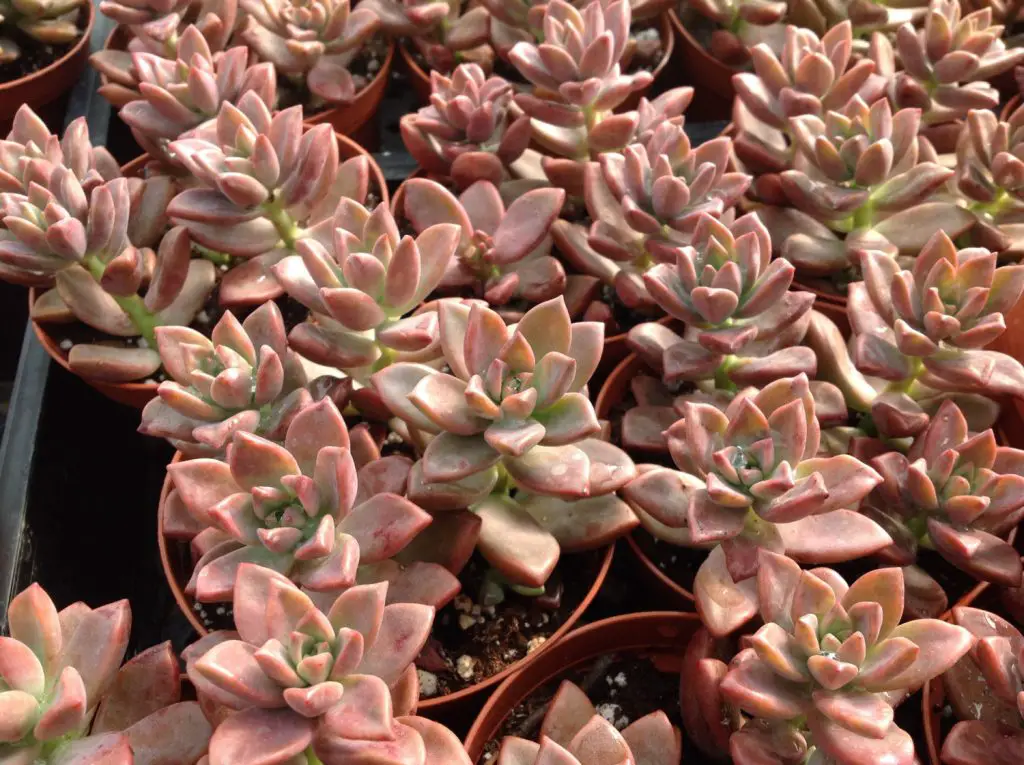
Another wonderful thing about succulents is that they come in all kinds of colors and shapes. There are spiky green ones, rose-shaped red, yellow and purple ones, as well as, rubbery, round-leafed ones that can grow in tiny containers or miniature hanging pots. Actually, succulents will grow in just about any kind of pot or cup, making them very easy to transport and keep as indoor plants.
3. Bamboo Palm
The bamboo palm is best known as one of the very best natural air purifiers around. This pretty, fronded palm plant filters out several potentially damaging chemicals in the air, including the formaldehyde fumes that often come out of new furniture. If you’ve bought a bunch of new furniture for your dorm room and want to take some of that “new couch” smell out of the air, buying a bamboo palm is a great way to do so.
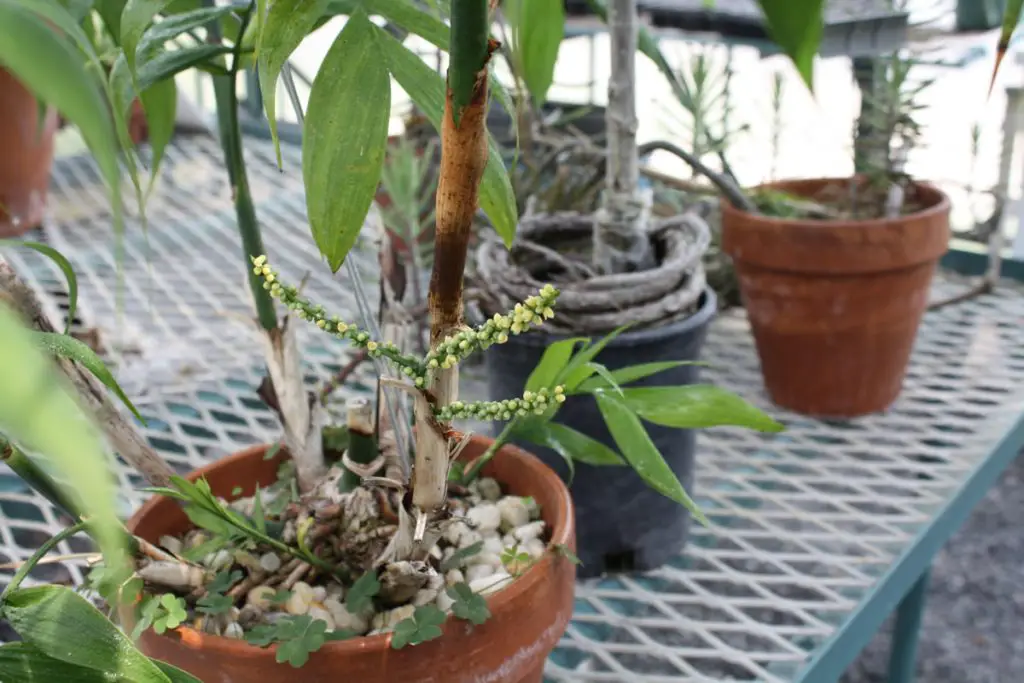
Unlike succulents, bamboo palms thrive in the shade and don’t need nearly as much sunlight to stay healthy. In fact, bamboo palms prefer to stay out of direct sunlight, meaning that you can keep your potted bamboo palm anywhere in your dorm room. This palm can grow anywhere from one-to-twenty feet in height and one-to-ten feet in width. This means that you may have to do some clipping maintenance every once in a while to keep your palm from growing too big, but apart from that, these plants are very easy to take care for. Water them often (but not too often, since constantly wet soil can lead to root rot) and clip away dead brown fronds whenever you get the chance. If you do these simple things, your air-filtering, fronded friend should do just fine.
4. Spider Plant
Just like the bamboo palm, spider plants are great for filtering out certain fumes and chemicals in the air. Apart from cleaning your air, these plants are great for many other reasons. For one, they’re very interesting to look at, with long draping white and green fronds that spread out from a common center; for two, they’re very low-maintenance and can live happily in small pots.
When taking care of your spider plant, it’s important to make sure the soil in the plant’s pot can drain. If you put your spider plant in a pot with proper drainage, you greatly decrease the chances that your plant will develop root rot. Spider plants also enjoy lower temperatures, so keep them in shady, comfortably cool (but not too cold!) spaces.
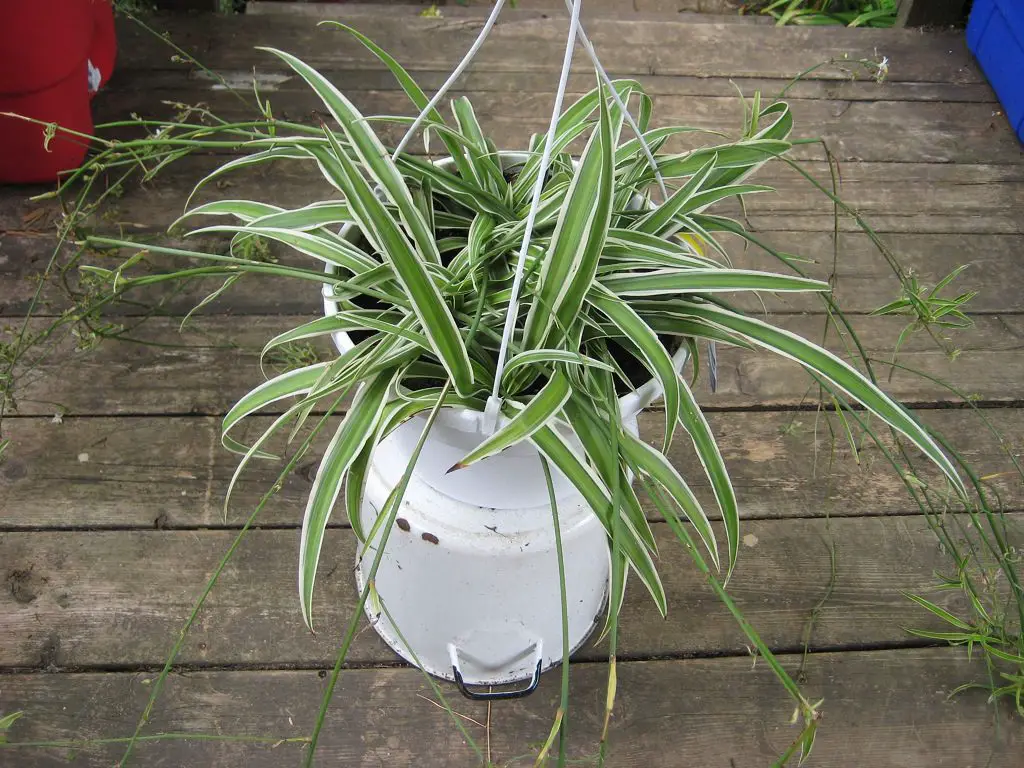
Another thing to consider when buying a spider plant is that most cats are strangely attracted to these common house plants. Although spider plants aren’t known to be toxic to cats, you should still watch your cat carefully around your plant, and make sure to act if your pet ingests any of the plant’s leaves. Occasionally, cats will react poorly to eating the leaves of the spider plant, so keep this in mind if you own a cat.
5. Orchids
Orchids naturally grow in tropical regions, so they prefer a warm or temperate climate. Orchids are the only plant on this list that are known for their incredible flowers, which, when in full bloom, can be breathtaking. These flowers come in a variety of different colors, from light pink to the more classic bright white.
Like all the other plants on this list, orchids take in carbon dioxide from the air and produce oxygen, effectively freshening and improving air quality. These plants can also increase air humidity; higher humidity means a decreased chance of flu viruses spreading, as well as a healthier environment for anyone who suffers from seasonal allergies.
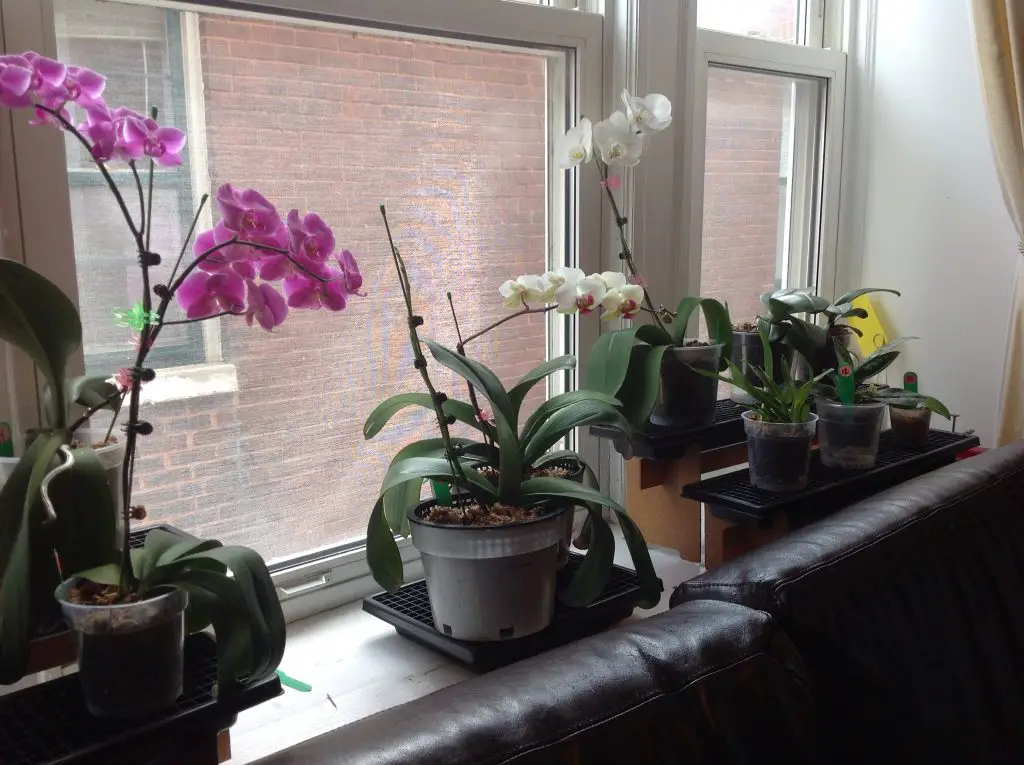
To care for your orchid plant, first make sure that they’re living in moist but well-drained soil always. Too much moisture is bad for orchids, but too little can lead to wilting. Some of the best soils to grow orchids in are fir bark soil, potting soil with sand or cork and a mix of charcoal and peat moss. For optimal health, keep your orchid near a window or source of filtered sunlight. Because they are tropical plants, orchids like sunlight, but not extreme, desert-like heat.
If you take proper care of your orchid, it will produce beautiful flowers and be a wonderful addition to any dorm room.


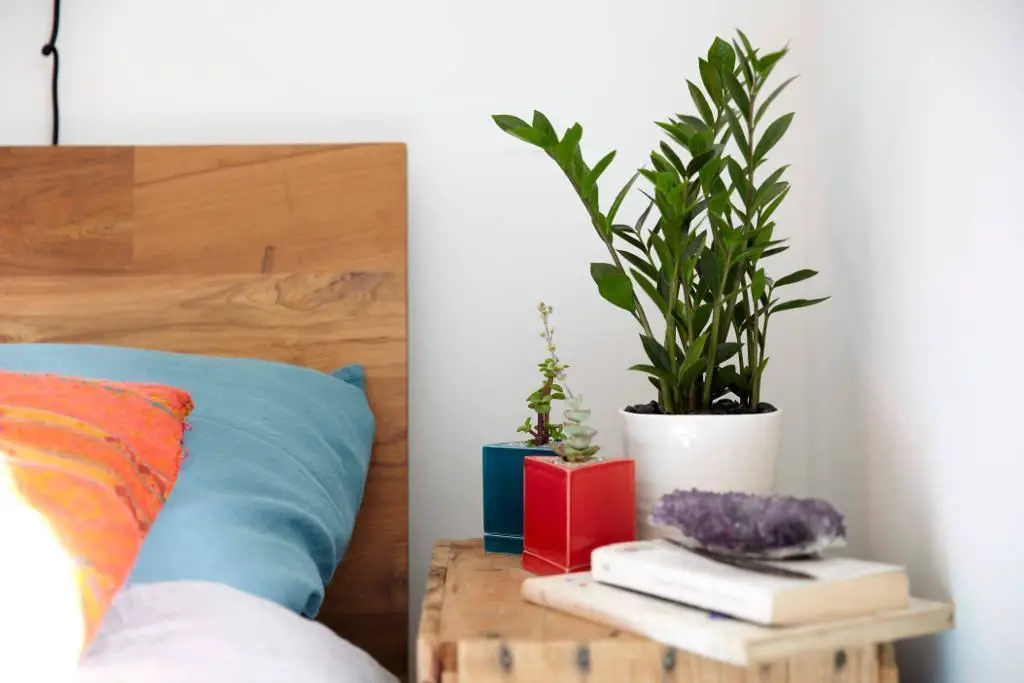















It’s evident that you’ve put a lot of thought and effort into your comment. Your detailed insights have certainly enhanced my understanding, and I’m grateful for that.